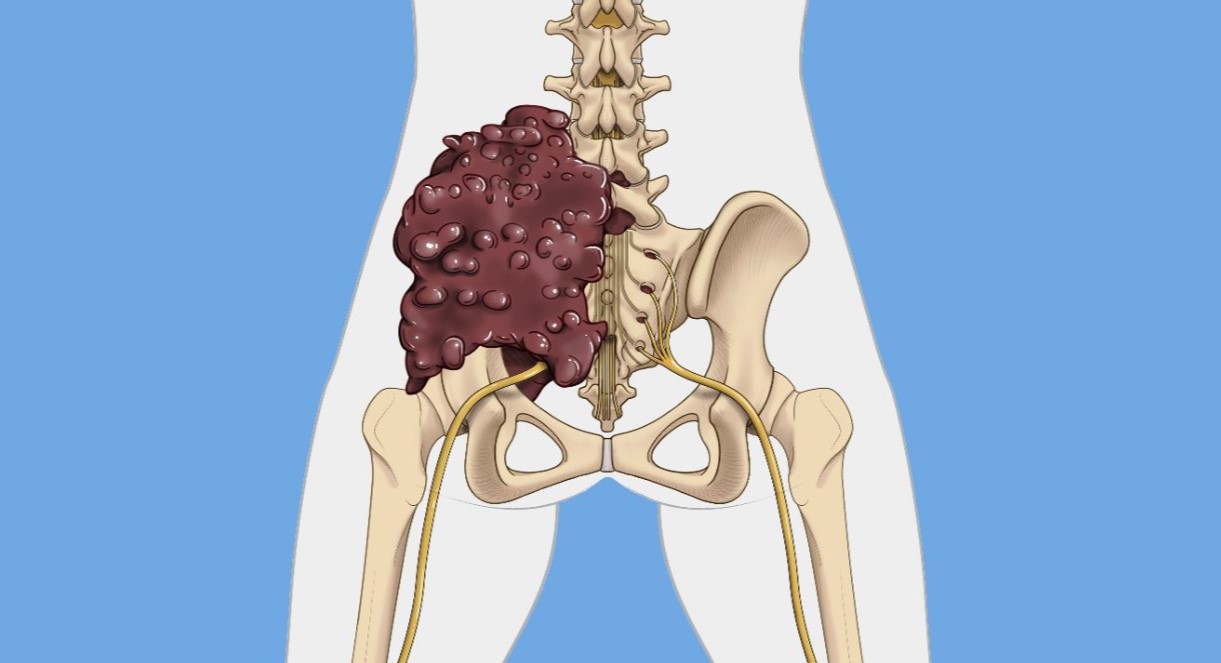
What is Patterson Syndrome? Patterson Syndrome, also known as pseudoleprechaunism, is an extremely rare genetic disorder first described by Dr. Joseph Hanan Patterson and Dr. Watkins in 1962. This condition affects various systems in the body, including connective tissue, the neuroendocrine system, and the skeletal system. Patients often exhibit unique symptoms such as congenital bronzed hyperpigmentation, cutis laxa of the hands and feet, bodily disproportion, hirsutism, and severe intellectual disability. Endocrine abnormalities like hyperadrenocorticism, Cushingoid features, premature adrenarche, and diabetes mellitus are also common. Due to its rarity, only a handful of cases have been reported, making Patterson Syndrome a challenging condition to diagnose and manage.
Key Takeaways:
- Patterson Syndrome is an extremely rare genetic disorder with unique symptoms affecting the body. It causes bodily disproportion, hirsutism, and severe intellectual disability, making diagnosis and treatment complex.
- The prognosis for individuals with Patterson Syndrome is generally poor due to severe intellectual disability and other systemic abnormalities. Treatment involves a multidisciplinary approach and genetic counseling for affected individuals and their families.
Understanding Patterson Syndrome
Patterson Syndrome, also known as pseudoleprechaunism, is a rare genetic disorder with unique symptoms affecting various body systems. Let's dive into some key facts about this intriguing condition.
-
Name and Classification: Patterson Syndrome is an extremely rare genetic disorder, often referred to as pseudoleprechaunism due to its similarity in appearance to leprechaunism.
-
Named After: The syndrome is named after Dr. Joseph Hanan Patterson, who first described the condition along with Dr. Watkins in 1962.
-
Prevalence: Patterson Syndrome is extremely rare, with only a handful of reported cases in medical literature.
Symptoms and Physical Characteristics
The symptoms of Patterson Syndrome are diverse and affect multiple systems in the body. Here are some of the primary symptoms and physical characteristics.
-
Symptoms: The primary symptoms include congenital bronzed hyperpigmentation, cutis laxa of the hands and feet, bodily disproportion (large hands, feet, nose, and ears), hirsutism, and severe intellectual disability.
-
Endocrine Abnormalities: Patients often exhibit endocrine abnormalities, including hyperadrenocorticism, Cushingoid features, premature adrenarche, and diabetes mellitus.
-
Skeletal Deformities: The syndrome is characterized by skeletal deformities that progress with age, including generalized skeletal dysplasia.
-
Connective Tissue Affection: The condition primarily affects the connective tissue, leading to cutis laxa of the hands and feet.
-
Intellectual Disability: Severe intellectual disability significantly affects the cognitive and developmental abilities of affected individuals.
Facial and Bodily Features
The facial and bodily features of Patterson Syndrome are distinct and often lead to its diagnosis.
-
Facial Appearance: Patients often have an unusual facial appearance, similar to that caused by leprechaunism, due to bodily disproportion and hyperpigmentation.
-
Hyperadrenocorticism: This condition is characterized by an overproduction of adrenocorticotropic hormone (ACTH), leading to Cushingoid features such as weight gain, moon face, and buffalo hump.
-
Diabetes Mellitus: Patients often develop diabetes mellitus due to endocrine abnormalities, particularly hyperadrenocorticism.
-
Premature Adrenarche: Some cases show premature adrenarche, which is an early onset of pubic hair growth and other secondary sexual characteristics.
Skin and Hair Characteristics
The skin and hair characteristics of Patterson Syndrome are unique and contribute to its diagnosis.
-
Generalized Skeletal Dysplasia: Radiographic findings reveal generalized skeletal dysplasia, indicating widespread bone abnormalities.
-
Congenital Bronzed Hyperpigmentation: This distinctive feature causes the skin to appear bronzed due to increased melanin production.
-
Cutis Laxa: The skin on the hands and feet becomes loose and hangs in folds, a condition known as cutis laxa.
-
Bodily Disproportion: Affected individuals often have large hands, feet, nose, and ears, leading to a disproportionate body size.
-
Hirsutism: Excessive hair growth is another symptom observed in patients with Patterson Syndrome.
Metabolic and Genetic Aspects
The metabolic and genetic aspects of Patterson Syndrome are crucial for understanding its underlying causes and inheritance patterns.
-
Hyperinsulinemia: Although not a primary feature, some cases may exhibit hyperinsulinemia, which is an excessive secretion of insulin.
-
Insulin Resistance: Similar to leprechaunism, patients may experience insulin resistance, leading to high blood sugar levels after meals.
-
Genetic Cause: The exact genetic cause was unknown until 1981 when it was identified as a distinct genetic disorder separate from leprechaunism.
-
Inheritance Pattern: The inheritance pattern is not fully understood but is believed to be inherited in an autosomal recessive manner.
Diagnosis and Treatment
Diagnosing and treating Patterson Syndrome involves a multidisciplinary approach due to its complex nature.
-
Diagnosis: Diagnosis is primarily based on clinical evaluation, detailed patient history, and identification of characteristic symptoms and physical findings. Genetic testing can confirm the presence of mutations in relevant genes.
-
Prenatal Diagnosis: Prenatal diagnosis is possible through amniocentesis, where DNA analysis can identify mutations in the insulin receptor gene or other relevant genes associated with the syndrome.
-
Treatment: Treatment is primarily symptomatic and supportive. It involves a multidisciplinary approach involving pediatricians, endocrinologists, dermatologists, and other healthcare professionals. Genetic counseling is recommended for affected individuals and their families.
-
Prognosis: The prognosis for individuals with Patterson Syndrome is generally poor due to severe intellectual disability and other systemic abnormalities. The condition significantly impacts the quality of life and often requires ongoing medical management and supportive care.
Final Thoughts on Patterson Syndrome
Patterson syndrome, also known as pseudoleprechaunism, is a rare genetic disorder with a unique set of symptoms. It affects multiple systems in the body, including the connective tissue, neuroendocrine system, and skeletal system. Key features include congenital bronzed hyperpigmentation, cutis laxa of the hands and feet, bodily disproportion, hirsutism, and severe intellectual disability. Endocrine abnormalities like hyperadrenocorticism, Cushingoid features, premature adrenarche, and diabetes mellitus are common. Diagnosis relies on clinical evaluation, patient history, and genetic testing. Treatment focuses on symptom management and supportive care. The prognosis remains poor due to severe intellectual disability and systemic abnormalities. Understanding Patterson syndrome is crucial for effective diagnosis and management, though its rarity poses challenges. Further research is needed to uncover the genetic and molecular mechanisms behind this condition.
Frequently Asked Questions
Was this page helpful?
Our commitment to delivering trustworthy and engaging content is at the heart of what we do. Each fact on our site is contributed by real users like you, bringing a wealth of diverse insights and information. To ensure the highest standards of accuracy and reliability, our dedicated editors meticulously review each submission. This process guarantees that the facts we share are not only fascinating but also credible. Trust in our commitment to quality and authenticity as you explore and learn with us.


